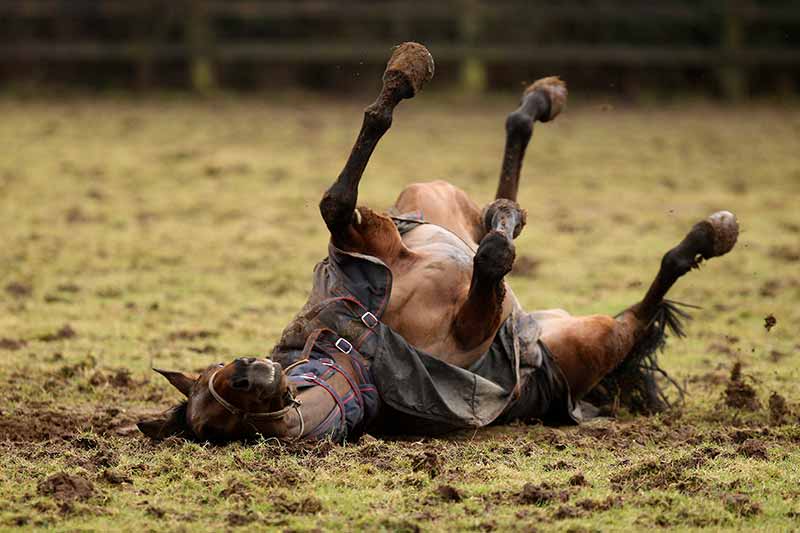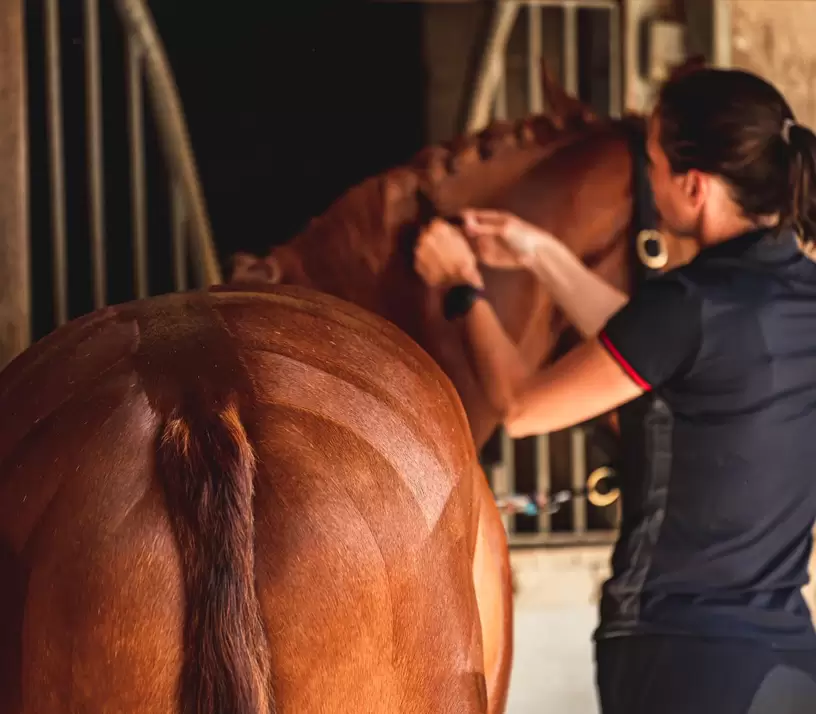
Mud fever, or pastern dermatitis is easily contracted especially during Ireland’s wet winters, when bacteria start to attack the skin around the lower leg. Crusty scabs appear alongside broken and damaged skin, often leading to swelling, heat and in extreme cases can cause lameness. Mud fever can be painful, and often horses will not tolerate the area being touched.
Horses with weakened immune systems such as those with Cushing’s disease, and thin-skinned breeds often are more prone to mud fever, but any horse exposed to a prolonged wet and/or muddy environment can develop the condition.


As always, prevention is better than cure – a few simple steps will help keep bacteria at bay and a daily care routine means owners will spot early symptoms as soon as they appear, making it easier to treat.
Tips for prevention:
- Keep horses prone to mud fever away from wet, muddy conditions as much as possible, if they have to live out some hard standing should be provided.
- Grassland management – rotating fields to reduce poaching, fencing off particularly muddy areas can help.
- Avoid repeatedly washing legs. Let the mud dry and brush off with a soft bristled brush.
- If they have to be washed, ensure the legs are thoroughly dried straight away.
- Keep stabled horses’ bedding clean and dry.
- Treat any underlying conditions or injuries that could allow bacteria to enter.
- Clip away any excess feathering, exposing legs to air and making them easier to clean and check (avoid clipping too close to the skin).
- Use a barrier to prevent mud sticking to legs and soaking to skin level.
MRS Cream is a skin protection ointment with tea tree oil suitable for use in wet, muddy conditions. It is ideal for protecting horses’ legs & heels, maintaining the skin barrier in wet conditions by forming a protective layer to prevent bacteria gaining access to the damaged skin.
Tea tree oil is also a natural antiseptic which will help with skin restoration in the event that mud fever is already present on the legs, meaning MRS Cream can be helpful for aiding recovery as well as prevention.
Early diagnosis of mud fever means the distressing effects can be minimized and quickly treated; therefore, legs should be checked daily. Owners with multiple horses should be conscious of cross contamination of equipment as the bacteria may spread – using separate sponges and grooming brushes helps prevent the problem spreading from one horse to another.


If left untreated, further complications like cellulitis and even lymphangitis can develop. Where the condition is not clearing up quickly, antibiotics and anti-inflammatories may be recommended by your vet depending on the clinical signs and overall health of your horse. This should only be done on veterinary advice in extreme or persistent cases.
Apply MRS Cream liberally to your horse’s legs routinely over winter, ensuring they are clean first (preferably by brushing off dry dirt, rather than washing) and rub the cream in until it reaches skin level. It is particularly important to apply the cream before turnout into wet and muddy conditions, and ensuring it reaches the skin gives it the best chance of forming a barrier and preventing bacteria reaching the skin. It is important to repeat regularly to prevent reoccurrence in horses prone to the condition.






 E-Store
E-Store



